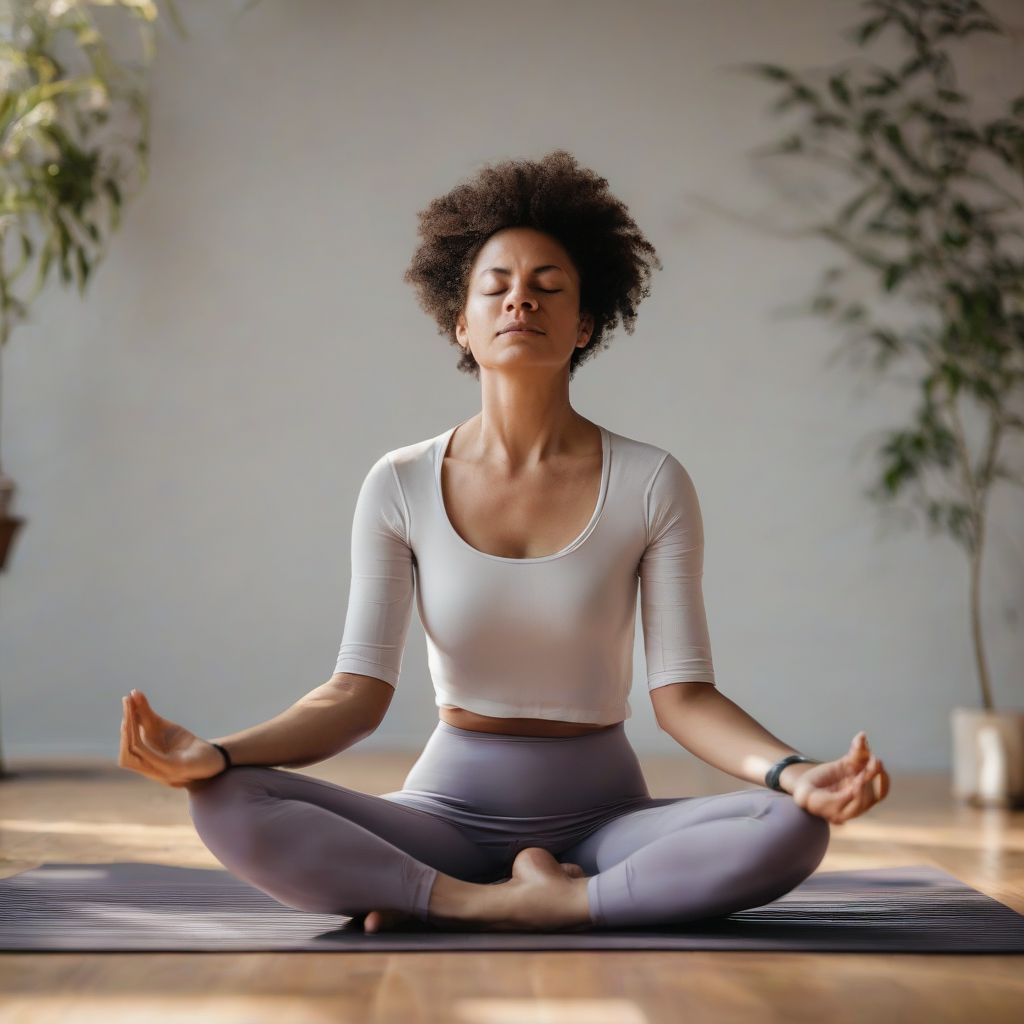Have you ever noticed how your breath changes during a yoga practice? It might become deep and steady during a challenging pose, or short and shallow when you’re struggling to find your balance. The truth is, your breath is a powerful tool that can deepen your yoga practice, leading to greater physical and mental benefits.
As a certified nutritionist and meal prep coach, I understand the interconnectedness of the mind and body. Just as mindful eating can transform your relationship with food, mindful breathing can revolutionize your yoga practice. Let’s explore some powerful yoga breathing techniques and how they can enhance your time on the mat.
Understanding the Importance of Yoga Breathing
In yoga, we call the breath “prana,” meaning “life force.” Prana is the vital energy that flows through us, and conscious breathing helps us to regulate and direct this energy. By focusing on our breath, we bring ourselves into the present moment, calming the mind and creating space for deeper stretches and poses.
Benefits of Yoga Breathing:
- Reduced Stress and Anxiety: Deep, controlled breathing activates the parasympathetic nervous system, which is responsible for the body’s relaxation response.
- Improved Focus and Concentration: Focusing on the breath helps to quiet the mind chatter, improving our ability to concentrate.
- Increased Energy Levels: Proper breathing techniques deliver more oxygen to the body, boosting energy levels and vitality.
- Enhanced Physical Performance: Deep breathing strengthens the respiratory muscles and improves lung capacity, which can improve athletic performance and endurance during yoga.
Powerful Yoga Breathing Techniques to Elevate Your Practice
Here are some of the most effective yoga breathing techniques that you can incorporate into your practice:
1. Dirga Pranayama (Three-Part Breath)
This foundational breathing technique is excellent for beginners and experienced yogis alike. It encourages complete and full breaths, expanding the lungs and calming the nervous system.
How to Practice:
- Sit comfortably with a straight spine or lie down on your back.
- Place one hand on your abdomen and the other on your chest.
- Inhale: Slowly breathe in through your nose, first filling your belly, then your chest, and finally your upper chest.
- Exhale: Slowly breathe out through your nose, releasing from your upper chest, then chest, and lastly your belly.
- Repeat for 5-10 rounds, focusing on the rise and fall of your breath.
2. Nadi Shodhana Pranayama (Alternate Nostril Breathing)
This balancing breath is known to purify the energy channels in the body, creating a sense of balance and clarity. It is often practiced before meditation to calm the mind.
How to Practice:
- Sit comfortably with a straight spine.
- Place your right thumb on your right nostril and your right ring finger on your left nostril.
- Close your right nostril with your thumb and inhale slowly and deeply through your left nostril.
- Close your left nostril with your ring finger and release your thumb from your right nostril.
- Exhale slowly and completely through your right nostril.
- Maintaining the same hand position, inhale through your right nostril.
- Close your right nostril and exhale through your left nostril.
- This completes one round. Continue for 5-10 rounds, alternating nostrils with each breath.
3. Ujjayi Pranayama (Victorious Breath)
This powerful breath is often used during yoga flows to build heat in the body and cultivate a meditative focus. The constricted back of the throat creates a soft “ocean” sound with each breath.
How to Practice:
- Sit or stand comfortably with a straight spine.
- Slightly constrict the back of your throat as if you were about to whisper “haaa.”
- Keeping the throat constriction, inhale and exhale slowly and deeply through your nose, creating a soft, oceanic sound with each breath.
- Continue for 5-10 rounds, focusing on the sound and sensation of the breath.
4. Kapalabhati Pranayama (Skull Shining Breath)
This invigorating breath is known for its cleansing and energizing effects. It involves forceful exhalations and passive inhalations.
How to Practice:
- Sit comfortably with a straight spine.
- Take a deep inhale through your nose.
- Exhale forcefully through your nose in short, sharp bursts, pulling your navel in towards your spine with each exhale. Allow the inhalations to be passive.
- Continue for 10-15 rounds. If you feel lightheaded, stop and rest.
Note: It is best to practice Kapalabhati Pranayama on an empty stomach and under the guidance of an experienced yoga teacher, especially if you are new to this technique.
Integrating Breathing Techniques Into Your Yoga Practice
The key to maximizing the benefits of yoga breathing is to practice regularly and mindfully.
- Start Slowly: Begin with just a few minutes of focused breathing each day and gradually increase the duration as you feel comfortable.
- Listen to Your Body: Pay attention to how your body responds to each breath. If you feel dizzy or lightheaded, stop and rest.
- Practice Makes Progress: Like any new skill, yoga breathing takes practice. Don’t be discouraged if you find it challenging at first. With consistent effort, you’ll notice a difference in your practice.
 Yoga Breathing Techniques
Yoga Breathing Techniques
Breathe Your Way to a More Powerful Practice
Incorporating conscious breathing into your yoga practice can be truly transformative. As you learn to control your breath, you gain control of your mind and body, unlocking a deeper level of peace, strength, and self-awareness. Experiment with these techniques and discover the incredible power of your own breath.
What are your favorite yoga breathing techniques? Share your experiences and tips in the comments below! And if you’re looking for more ways to enhance your well-being journey, explore our articles on mindfulness techniques for stress reduction and the best yoga practices for mental clarity.
[amazon bestseller=”yoga mat”]
